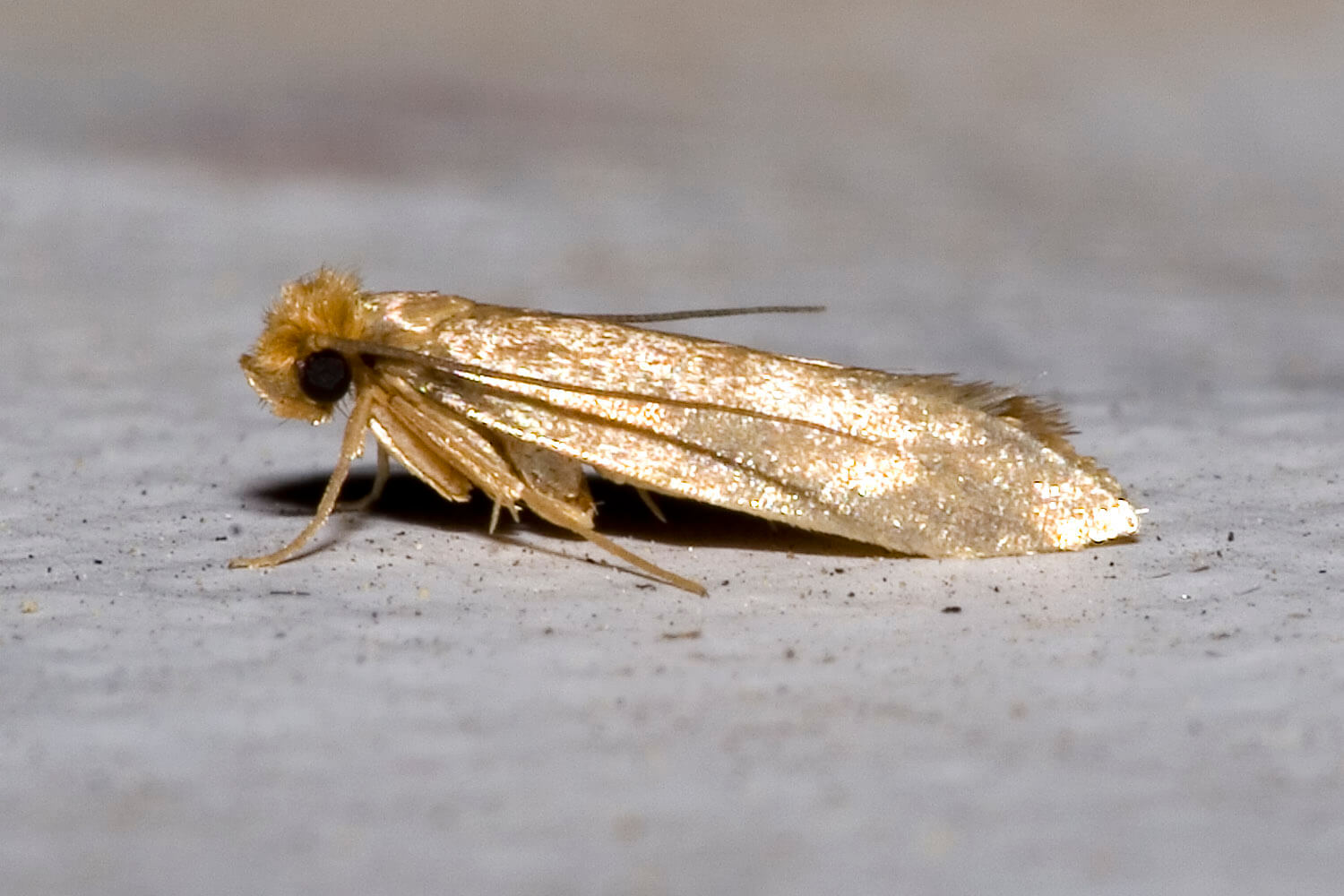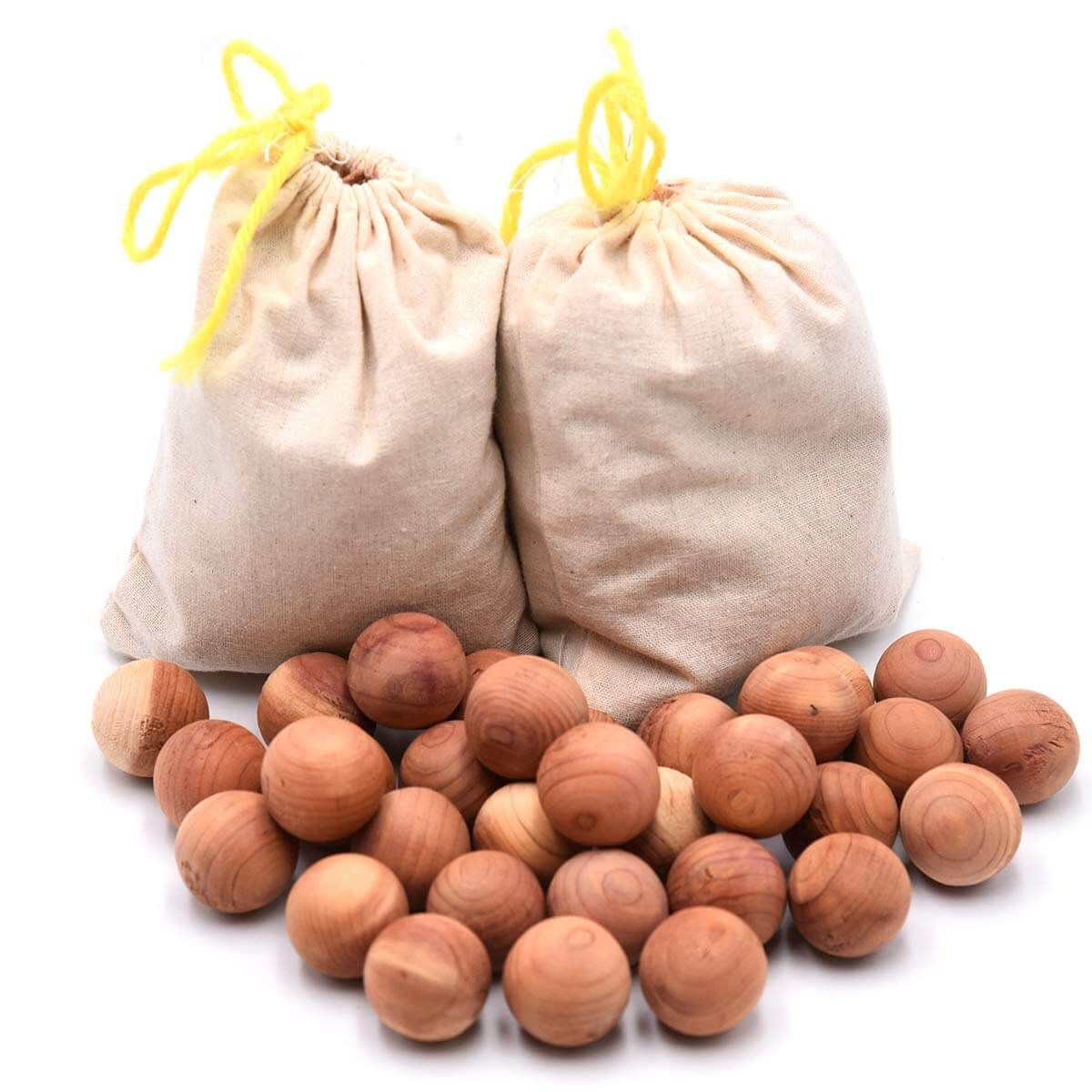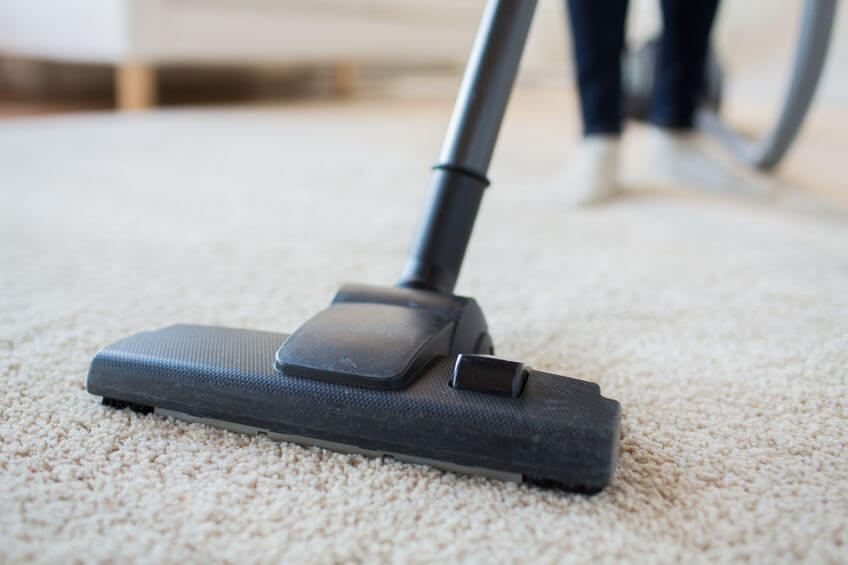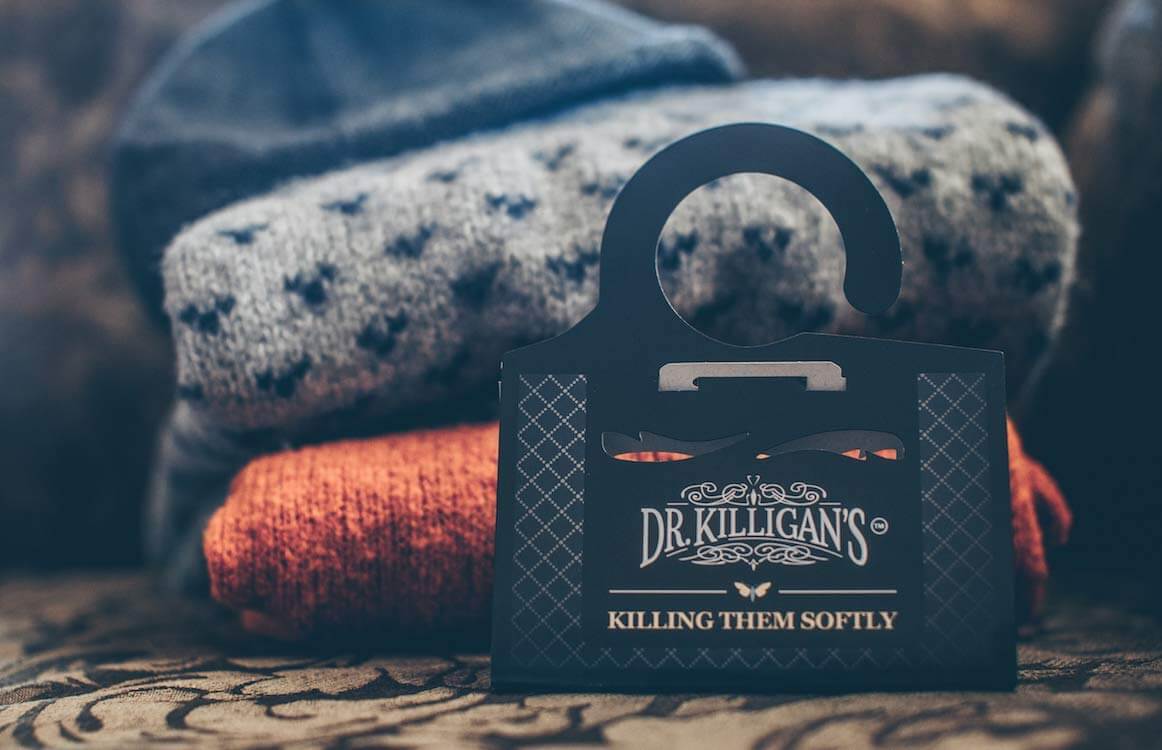- Home
- Indoor Pests
- Get Rid of Moths
Get Rid Of Moths
This post may contain affiliate links so I earn a commission.
Do you want to get rid of moths that are chewing holes in your clothing, socks, garments and other items inside your closet?
Clothing moths are quickly becoming a major problem in the US, United Kingdom and other parts of the world.
While they're not dangerous, the destruction they cause to clothing, carpet and other fabrics can become very expensive.
Why do moths invade your closet to begin with?
Clothing moths are nocturnal and they love the dark confined space of a closet or dresser where they can lay their eggs on the clothes and linens stored inside.
 Adult Clothing Moth
Adult Clothing MothOnce the eggs are laid, they hatch and the larvae feeds on the fabric.
The adult moths actually are not the ones that are causing the damage.
It's the larvae, and they love to eat wool, cashmere, silk, cotton and other fibers.
These larvae will eventually enter the pupae stage where they will emerge into winged adults leaving behind cocoon like casings on your clothing.
These adults then repeat the cycle, laying more eggs which turn into fabric loving larvae, which further extends your wardrobe issues.
Get Rid Of Moths - Identification
When we think of a moth, we typically envision the moths that are attracted to an outdoor light on a warm summer night.
These are not the type of moths that are causing damage to your clothing.
Clothing moths are not attracted to light and they're much smaller than the typical large white moth we all picture in our minds.
Clothing moths are pretty illusive.
Typically you'll notice their damage before you actually see one of these moths inside your dresser drawer.

About 10 years ago I started noticing small holes in the cotton boxers I kept inside my dresser.
At first it didn't seem very alarming when I just noticed one pair with holes.
Then, within a few weeks multiple pairs were damaged with irregular shaped holes chewed in them.
The holes were pretty unique.
They were not clean cuts (like you would get if you took a paper punch and made a crisp hole).
The fabric looked like it was worn through in an irregular shape....the classic work of clothing moths.
After I realized what the problem was, I was able to quickly get rid of clothing moths and prevent any future damage by following the steps below.
Get Rid Of Clothing Moths - Removal
After you've identified the problem, the next step is to remove the moths and larvae from your closet, carpet or dresser.
In my particular situation, I threw out all damaged clothing from my dresser and washed all remaining clothing in hot water.
While the clothes were being washed, I removed all the dresser drawers and thoroughly vacuumed the cracks and creases in and around the dresser.
Since clothing moths love to live in dark, out of the way places, you'll want use the vacuum to get all sides of the dresser, even the back and bottom.
Then I wiped the dresser down with a mild cleaning solution, reassembled the drawers and put the clean laundry back inside.
I also added a couple cedar balls to each drawer as an extra precaution.

Cedar contains natural oils that can actually kill the larvae.
It won't kill the adults but remember, it's the larvae that's actually causing the damage to your clothing.
Cedar repels a lot of insects which is why you'll commonly see closets that are entirely lined with cedar boards.
By using the steps above I was easily able to get rid of moths that destroyed nearly an entire dresser full of cotton boxers.
However, I was very lucky the problem was contained to only my confined dresser.
If I would have ignored the issue I'm certain they would have moved to other parts of my home, like a nearby closet for example.
Get Rid Of Moths - Additional Prevention And Removal Steps
Perhaps the best solution to get rid of moths is a fast reaction to their damage.
By addressing the problem fast, the odds of getting rid of them without needing to call a pest control expert is much higher.
Here's a step-by-step guide to walk you through a common clothing moth infestation.
Vacuum To Get Rid Of Moths - Thoroughly vacuum the infected and adjacent areas. Clothing moth larvae will actually eat away at your carpet, so a vacuum is crucial to getting rid of them. Remember to use the vacuums attachments to get into the cracks and corners of your dresser and closet areas.

Clean - Wipe down all accessible areas with a mild detergent. It's important to clean those tuff to reach places where moths love to hide. A good cleaning can help protect your home from a lot of unwanted indoor pests.
Remove Damaged Clothing - Immediately remove damaged clothing and place it in a sealed bag. This clothing should be removed from the home and thrown away to prevent further issues. If the clothing is still salvageable, you can place it in a ziplock bag and freeze it for 48 hours. This will kill any remaining larvae or adults and allow you to save the item.
Moth Traps - Specially designed moth traps are infused with female pheromones that attract male moths into the trap. Once inside they become stuck to the sticky paper inside killing the adult moths, which allows you to dispose of them.

Cedar - Although the jury is still out on cedar, the natural oils inside the wood can help kill the larvae but it won't do much for the adult moths. The good news is, cedar balls or packets are fairly cheap and it worked in my situation and they smell amazing!
Pesticides - Insecticides that contain pyrethrins have a quick knockdown for clothing moths and they don't leave behind a long lasting residue which makes them safe to apply around clothing and clothing areas. Look for a product that's labeled for clothing moths and always test the product on a small section of clothing to make sure it doesn't stain the fabric.
Seasonal Clothing Items - Seal seasonal clothing items in air tight containers to prevent moths from reaching them.
Get Rid Of Moths - Overall
Although they're becoming more common, you can safely and effectively get rid of moths that are causing damage to your clothing and prevent them from coming back.
As mentioned earlier, it's always easier to control an infestation during the early stages.
Follow the steps outlined above and you'll regain control of your home from unwanted clothing moths.



